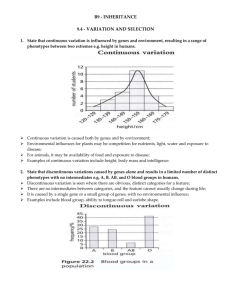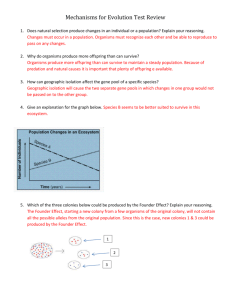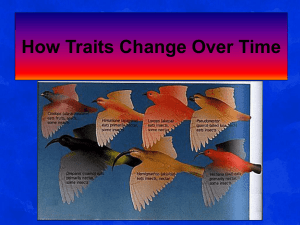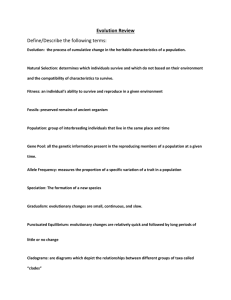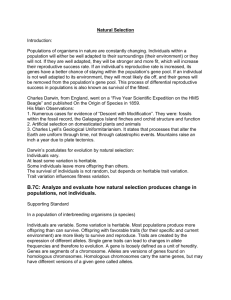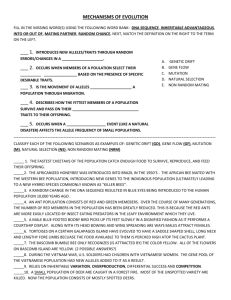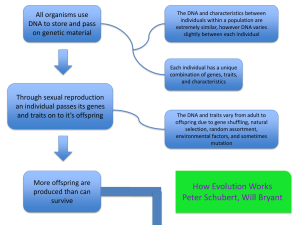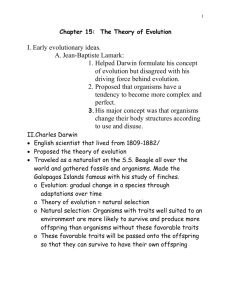Davis How Traits Change Over Time
advertisement
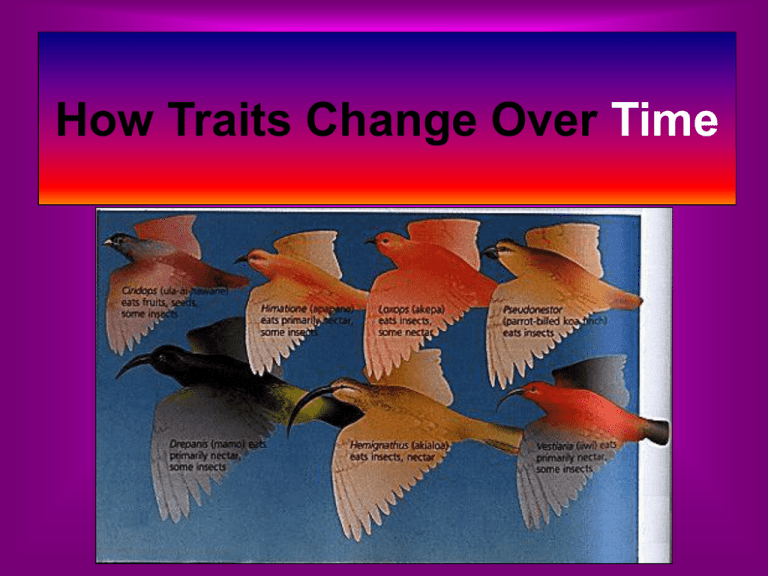
How Traits Change Over Time Cats which are small and not aggressive and can play the piano? How man has changed the traits of organisms through Selective Breeding. Dogs have been breed to be friendly Gold-colored fish Cows to produce more milk Horses for speed If you wished to breed the prettiest guppies, how would you do it? By only selecting the most colorful guppies and those with the longest tails, then breeding them generation after generation. Wild guppies Guppy which has been selectively bred. Dog breeders have been selectively breeding for desirable traits for centuries. Farmers have cultivated many popular vegetables from wild mustard, by artificially selecting for certain attributes. Selective Breeding • nature provides variation, humans select variations of genes that are useful. • Example - a farmer breeds only his best livestock In essence, when humans selectively breed organisms for certain traits, they are selecting for certain genes. Charles Darwin (1809-1882) Sailed around the world 1831-1836 What did Darwin’s Travels reveal • The diversity of living species was far greater than anyone had previously known!! How did tortoises and birds differ among the islands of the Galapagos? • Each island had its own type of tortoises and birds that were clearly different from other islands Galapagos Turtles Natural Selection • The traits that help an organism survive in a particular environment are “selected” in natural selection He wondered if nature could select for certain traits in the same way that man selects for certain traits. Can you find the animals in the pictures below? Observations • Organisms produce many more offspring than can possibly survive in nature. • Example- salmon typically lay ~10,000 eggs • Only a few will survive to adulthood and reproduce. Natural Selection Organisms vary and these variations (genes) are inherited by their offspring. •As resources become scarce, individuals must compete with each other to survive. •Most organisms will not make it to adulthood •Very few will breed and pass on their genes. Thousands of frog eggs are laid in clumps in a fresh water pond. Each clump is laid by one female. Few will survive to adulthood. Apple trees produce far more seeds than could possibly survive to become full grown trees. Putting these facts together, Darwin discovered one of the most important ideas in biology-- Natural Selection. • Offspring that do survive are best adapted to their environment • They will pass their genes on to their offspring. • Over time, populations of organisms become better adapted to their environment by this process of natural selection. For example, this species of insect is well adapted (carries the right genes) to blend into its environment. Do you see the walking stick insect? It received those genes from its parents, whose genes were successful enough to allow them to survive long enough to breed. Another example of natural selection at work (click below to watch video clip) Note: Turn caption on while viewing Populations are constantly changing (The Eternal Arms Race) Click on the video below to see an interesting case of an evolving arms race. Evolution means change over time. Cars have changed over time. Computers have changed over time. Video games have changed over time. pong Primate Brain Capacity Vestigial Organs • Traces of homologous organs in other species • Organ that serves no useful function e.g. Appendix , wisdom teeth Natural Selection (in summary) 1. Organisms vary and these variations (genes) are inherited by their offspring. 2. Organisms produce more offspring than can possibly survive in nature. 3. Those offspring that do survive are best adapted to their environment and will pass their genes on to their offspring. The result is, over time, populations of organisms become better adapted to their environment by this process of natural selection which increases their survival rate .
